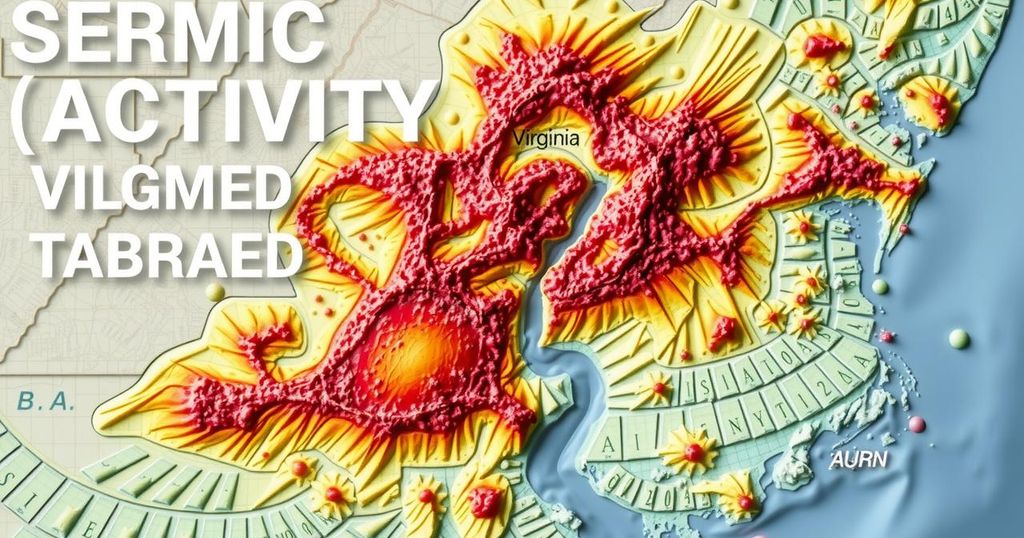On Tuesday, a 2.8 magnitude earthquake struck near Richmond, Virginia, at a shallow depth, prompting over 1,300 reports from residents but fortunately no damage or injuries. This quake is part of a series of recent seismic activities in the region, indicating occasional seismic risks despite Virginia’s overall low earthquake frequency.
On Tuesday evening, a minor earthquake of magnitude 2.8 occurred in the vicinity of Richmond, Virginia, as confirmed by the United States Geological Survey (USGS). The seismic activity took place at 5:28 PM at a shallow depth of 1 kilometer near Wyndham. This earthquake was reportedly felt and heard by numerous residents, with over 1,300 individuals logging their experience through the USGS’s “Did you feel it?” reporting tool. Fortunately, there were no reported damages or injuries resulting from this event.
This recent tremor followed a similar earthquake that struck the Richmond area in July and another in mid-October 2023, which, although slightly stronger at magnitude 2.2, produced fewer reports. The October earthquake, located near Stuarts Draft, had a depth of 8.5 kilometers and also coincided with prior seismic activity where a pair of quakes occurred in July. Virginia typically experiences infrequent seismic events, with the last notable earthquake prior to the October incidents being a magnitude 2.3 event near New Castle on June 20, 2023, which caused schools to close in one county.
Although Virginia is not known for significant seismic activity, it has experienced over 160 earthquakes since 1977, with 16% of these being felt by the population. This corresponds to an average of one earthquake per month, with an approximate frequency of two felt earthquakes per year. The state’s history includes destructive earthquakes, with the most substantial being a magnitude 5.8 quake near Mineral, Virginia, on August 23, 2011, which impacted a vast region from Maine to Georgia, affecting approximately one-third of the U.S. population and resulting in total economic losses estimated at $200−300 million.
Settlements and landmarks sustained damage during these historical seismic events, with significant structural impacts noted within the Washington D.C. area due to the 2011 earthquake, indicative of the potential risk posed by seismic activity in Virginia, albeit infrequent. The 2011 earthquake illustrates the potential severity of earthquakes in the region, despite their rarity, and underscores the importance of preparedness for future seismic occurrences.
The seismic phenomena observed highlight the need for residents to remain vigilant despite the low frequency of earthquakes in Virginia, which could potentially escalate in severity, leading to significant disruptions and implications for public safety and infrastructure.
Earthquakes in Virginia, while infrequent, can still pose risks to residents and infrastructure. The state has documented over 160 seismic events since 1977. Virginia’s geology allows for minor tremors, making it relatively unique in the eastern United States, where more significant earthquakes are less common. Understanding the state’s seismic history, including the most damaging earthquake in 2011, raises awareness regarding preparedness and public safety in the event of a natural disaster.
In summary, the recent 2.8 magnitude earthquake near Richmond, Virginia, was notable for being widely felt without resulting in any damages or injuries. With a history of infrequent but occasionally damaging seismic activities, the state emphasizes the importance of earthquake preparedness among its residents. The previous occurrences in October 2023 and the 2011 earthquake serve as reminders of the latent seismic risks posed to this region.
Original Source: weatherboy.com






